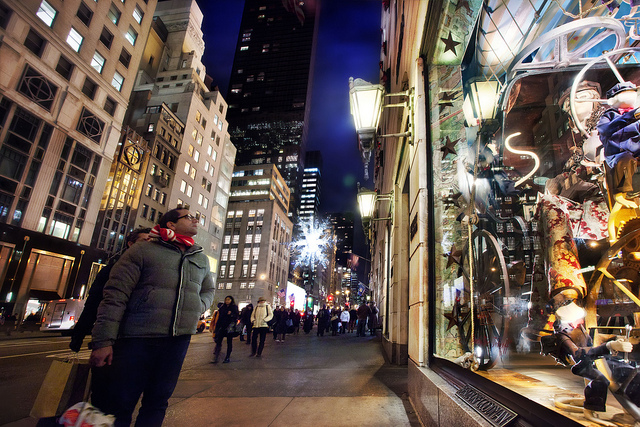Every year around this time, we start bemoaning how much American consumers buy into the social construct of Black Friday. And while we’re doing this, we place a significant amount of blame on retailers and consumer product companies for feeding the beast. But the truth is that the beast is a two-part beast. As much as retailers have propagated the idea of holiday shopping and Black Friday shopping, consumers have also fed the beast by cornering retailers into a position where they’re dependent upon Black Friday and holiday sales. Because consumers are waiting for Black Friday deals, they hold off on shopping at other times. And because retailers know that consumers are waiting for Black Friday deals they “pay into” the system. Nobody is free of blame here in our unsustainable economic framework! But how much are retailers reliant on holiday sales, kicking off with the Black Friday “event?” Today we’ll take a look at that number.
If You Read the Headlines, You’d Think that Black Friday Was Fading to Grey
And perhaps the day itself is, but not the concept. After Black Friday 2014, virtually every newspaper and financial publication bombarded readers with headlines about how Black Friday sales were down. In fact, sales were down eleven percent and it was the second year in a row that Black Friday sales (defined as sales over Thanksgiving weekend) were down. But the numbers are more complex than that. These days, in order to evaluate the “health” of Black Friday and how much retailers rely on it, you really need to break it down into two numbers, neither of which are year-over-year revenue for a set weekend.
Firstly, There’s the Actual Dollar Amount
According to the National Retail Foundation, the total amount spent in 2014 between Thanksgiving Thursday and the Sunday following Thanksgiving was $50.9 billion dollars. We understand that the number we just quoted may represent a drop for retailers (and it did) but it’s still an enormous amount of money being pumped into the consumer machine. In fact, the same report estimates that the average amount spent by a shopper over Black Friday weekend was just over $380. We’re fine with the idea that, from a business perspective, retailers need to track year-over-year spend and successes. But nobody should confuse the year-over-year drop with an indication that consumerism isn’t alive and well over Black Friday weekend. It’s certainly alive and well. In fact, it’s got a big, strong heartbeat.
Secondly, Black Friday is No Longer Black Friday
The second thing that you need to consider when looking at the numbers related to Black Friday is this: Black Friday is no longer a one day, or even one weekend event. In the ever increasing competition for Black Friday related retail dollars, stores and companies have been launching their “Black Friday” deals earlier and earlier. For example, in 2014 Target offered its “first round” of Black Friday deals on November tenth and Walmart actually launched deals marketed as Black Friday deals at the first of the month (of November). So while the sales number for the four or five days considered to be Black Friday weekend were down, that seems to be only logical. Customers were spacing out their shopping over the course of more weeks and days throughout the entire month. So the number of sales and revenue that made up a small four day window when people may have been glad to be home with their families might not be the best representation of what was actually spent.
So What Is the Number You Should Look At?
Because Black Friday isn’t simply represented by a three or four day span any longer and because a significant amount of shopping is done online and not ultimately counted in the Black Friday retail numbers, the revenue number for Black Friday isn’t actually a very good indication of how rampant consumerism is during the holiday shopping season. But there is a number that reflects that status. It’s the total holiday sales number. For one example, shopping dollars on the Saturday before Christmas (the last shopping day before Christmas) were up from the year before almost 2.5% with a total revenue of $42 billion dollars.
So, the question remains, how much do retailers depend on Black Friday sales and why are these numbers so important to them? According to the National Retail Institute, the percentage of an industry’s revenue for the entire year can range from between a low of 13.4% (electronics stores – surprisingly) to a high of 23.8% (jewelry stores) in December, with a similar number in November during the holiday build up. That means that in some industries you can expect between 35-50% of the entire annual sales cycle to happen in the month leading up to and following Black Friday. If your livelihood is dependent on holiday sales, we say that you have little to worry about. Numbers may be down when the data is cut certain ways, but it appears that Americans’ obsession with holiday shopping is far from over!
Did we miss a fact about Black Friday retail spending that you want to share with us? If so, just tell us about it on one of the social media channels below.
Facebook | Twitter | Instagram | Tumblr | Pinterest | Google+ | Medium
Photo Credit: Chris Ford via Flickr





